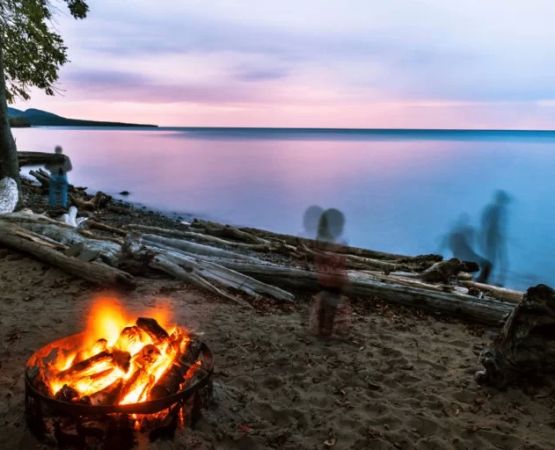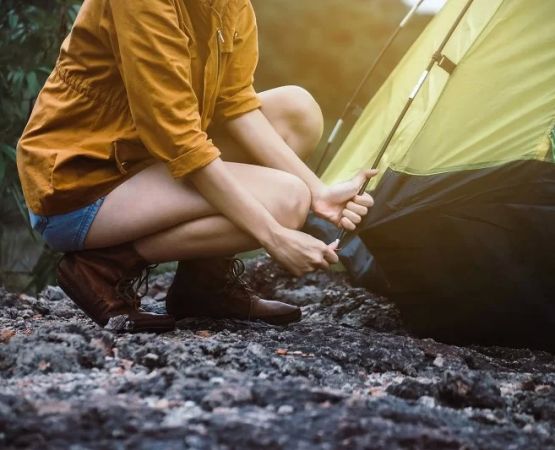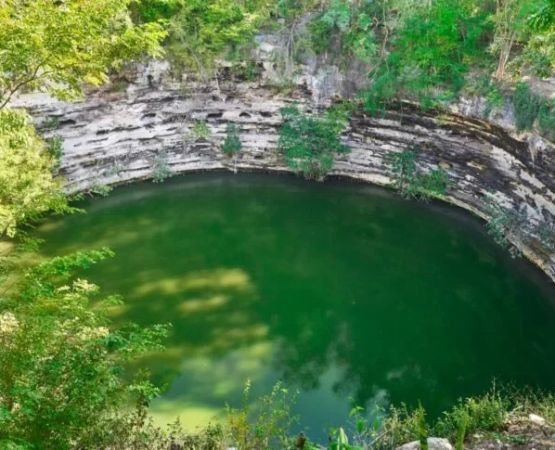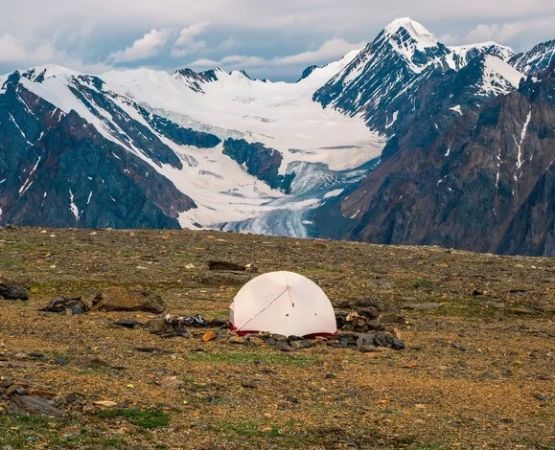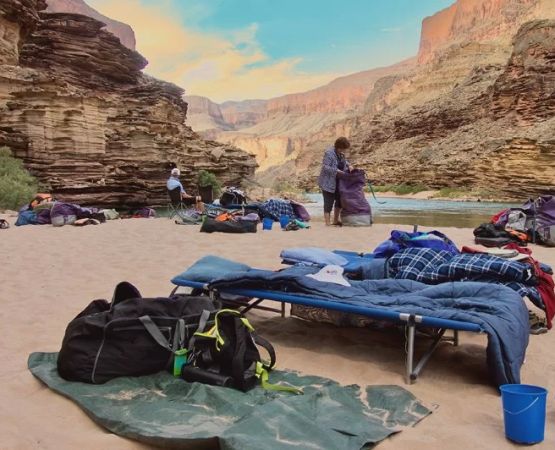- understanding-columnar-rock-formations
- choosing-a-safe-campsite-near-rock-faces
- essential-camping-gear-and-preparation
- respecting-the-environment-and-geological-features
- real-experiences-and-advice-from-pine-cliff-resort
1. Understanding Columnar Rock Formations
Columnar rock faces are among nature’s most fascinating geological wonders. Formed through the slow cooling and contraction of lava, these basalt columns create striking vertical patterns that attract hikers, climbers, and campers from across the United States. Some of the best-known examples include Devil’s Postpile in California, Columbia River Gorge in Oregon, and Giant’s Causeway-like structures in the Pacific Northwest.
Camping near these formations offers a unique combination of adventure and tranquility. The echo of the wind between stone pillars, the way the light changes across the surfaces at sunrise, and the sense of ancient stillness all contribute to an unforgettable outdoor experience. However, these areas also demand respect and understanding, as the terrain can be unstable or prone to erosion if mishandled by visitors.
2. Choosing a Safe Campsite Near Rock Faces
When camping near columnar rock formations, safety and environmental responsibility come first. Choosing the right site ensures not only a peaceful night’s sleep but also minimizes your impact on the delicate surroundings.
2.1 Avoid Cliffs and Overhangs
It may be tempting to set up camp right beneath the columns for the dramatic view, but this can be dangerous. Falling rocks and sudden shifts in weather can make such locations hazardous. Set up camp at a safe distance, ideally in flat areas where drainage is good and there is some natural shelter from the wind.
2.2 Check for Weather Patterns
Columnar formations often appear in highland or plateau areas where weather can change quickly. Before camping, check local forecasts for wind and rain conditions. Moisture can make basalt surfaces slippery, and strong winds can funnel through narrow rock corridors.
2.3 Follow Local Regulations
Some regions with famous rock columns are protected under state or national park regulations. Camping may only be allowed in designated areas. Always check park maps and signage before pitching your tent. Respecting these rules helps preserve the formations for future visitors.
3. Essential Camping Gear and Preparation
Camping near columnar rock faces requires thoughtful preparation. Because the terrain is rocky and uneven, packing the right equipment can make all the difference between a challenging trip and a comfortable outdoor retreat.
3.1 Ground Protection and Insulation
Use a durable, thick sleeping pad to insulate yourself from the cold ground. Rocks can drain body heat quickly, so thermal protection is key. A tent with a reinforced base or an added ground tarp provides extra cushioning and prevents damage from sharp stones.
3.2 Cooking and Food Storage
Campfires are often restricted near sensitive geological sites, so a portable stove is a must. Use refillable gas canisters and cook on stable, non-flammable surfaces. To keep wildlife away, store food in sealed containers or hang it from a tree branch well away from your sleeping area.
3.3 Lighting and Navigation
Columnar regions can cast deep shadows at dusk, making navigation tricky. Bring extra lighting—a headlamp and backup flashlight—and mark your camp perimeter with small solar lights for visibility. Always carry a physical map, since GPS signals can be spotty near cliffs or valleys.
3.4 Clothing and Layering
Even in summer, temperatures near rocky plateaus drop sharply at night. Pack in layers: moisture-wicking base clothes, a fleece layer, and a weatherproof outer shell. Gloves and a hat are essential for cold mornings, especially if you plan to hike early to watch the sunrise.
4. Respecting the Environment and Geological Features
Columnar formations are not just beautiful—they are ancient and fragile. Each hexagonal pillar represents thousands of years of geological history. As such, responsible camping is essential to preserving their integrity.
4.1 Leave No Trace Principles
Pack out everything you bring in, including trash and biodegradable items. Avoid using soap or detergent directly on the ground or in nearby streams. Stick to established trails to prevent erosion and avoid dislodging smaller stones or plants clinging to the rock base.
4.2 Avoid Climbing Without Proper Equipment
While the hexagonal columns may look climbable, they can be brittle or slippery, especially after rain. If you plan to climb, use proper safety gear and only under expert supervision. Unauthorized climbing can damage both the rocks and your safety.
4.3 Protect Local Wildlife
Columnar areas often provide shelter for small mammals, birds, and insects. Avoid setting up camp near nests or burrows. Keep noise to a minimum during dawn and dusk, when many animals are active. Observing wildlife quietly enhances the camping experience and shows respect for the ecosystem.
5. Real Experiences and Advice from Pine Cliff Resort
Many travelers visiting Pine Cliff Resort have discovered that camping near columnar rock faces is both thrilling and meditative. One guest recalled hiking through the basalt formations at sunrise, describing how the golden light illuminated every pillar, transforming the landscape into a cathedral of stone. Another visitor mentioned the serene nights spent stargazing, with the columns casting long silhouettes under the Milky Way.
Our team at Pine Cliff Resort encourages campers to embrace both adventure and mindfulness. Before setting out, we recommend checking your gear list, weather conditions, and local guidelines. Our staff can also assist in selecting nearby camping zones that balance accessibility with stunning natural beauty.
Camping near columnar rock faces isn’t just a trip—it’s an experience that reconnects you with Earth’s natural artistry. With preparation, respect, and curiosity, your journey among these majestic formations can become one of your most memorable outdoor adventures.


